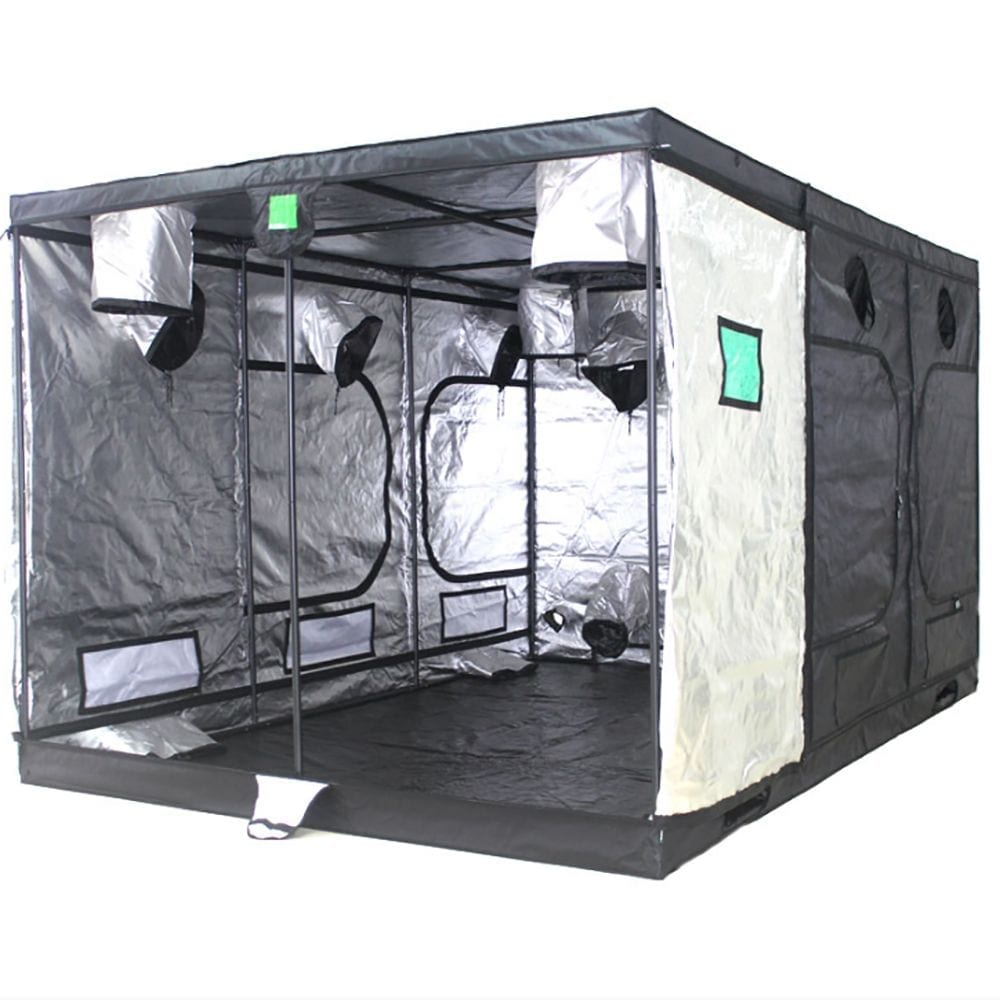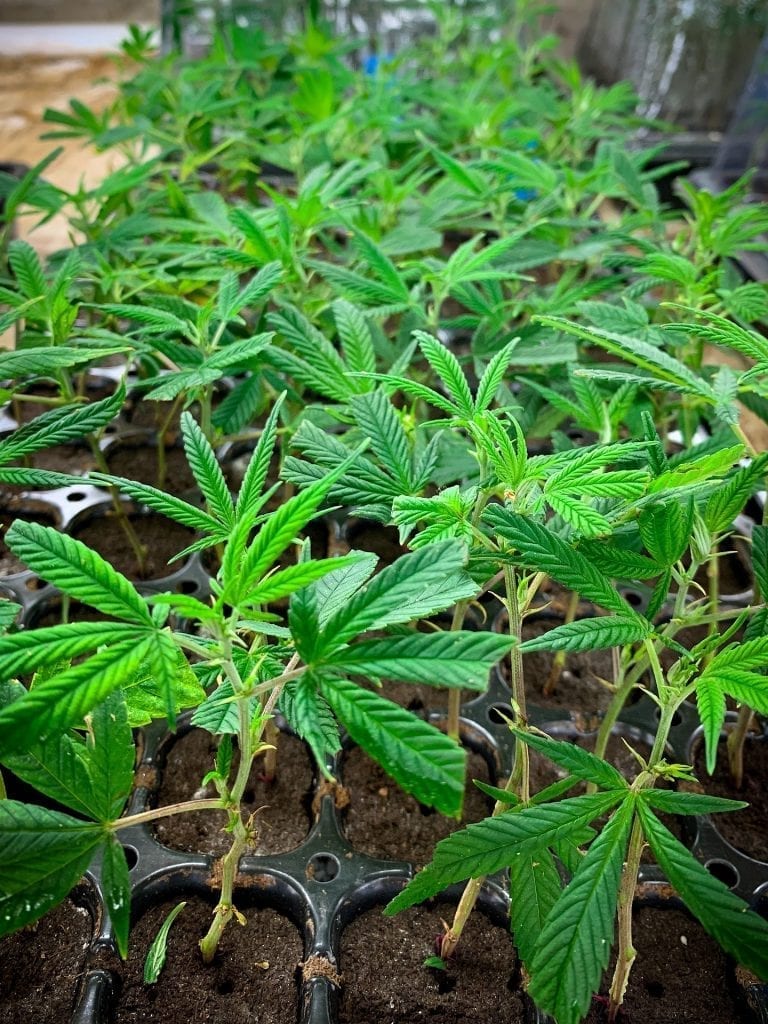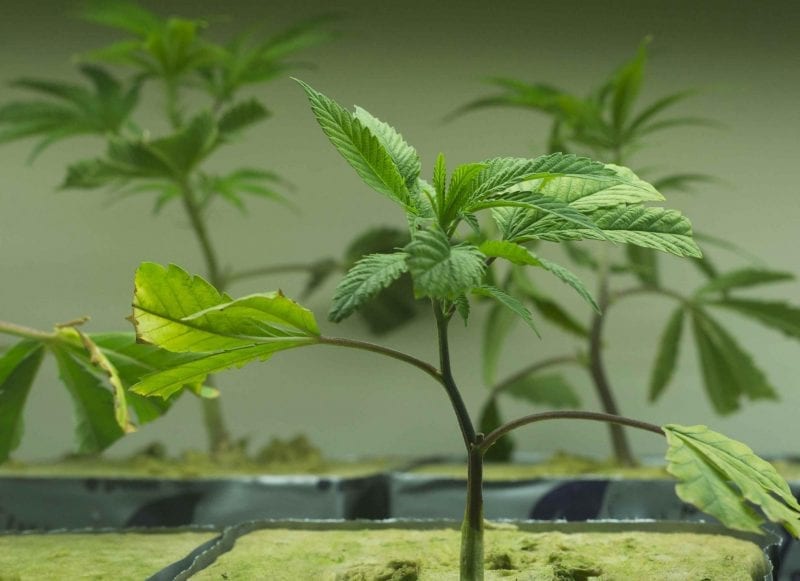Do you have plants in your backyard or your small outdoor garden that you are fond of? If so, an aeroponic cloner is something you have to look into.
It can be your juiciest and flavorful cherry tomatoes, your aromatic mint leaves, your cannabis plant, or maybe a unique chili pepper that is special to you and requires extra attention.
If you are a beginner in plant cloning, then the whole process may seem to petrify and frighten you. Moreover, the cultivation journey can be very intimidating and challenging, but in reality, it is not.
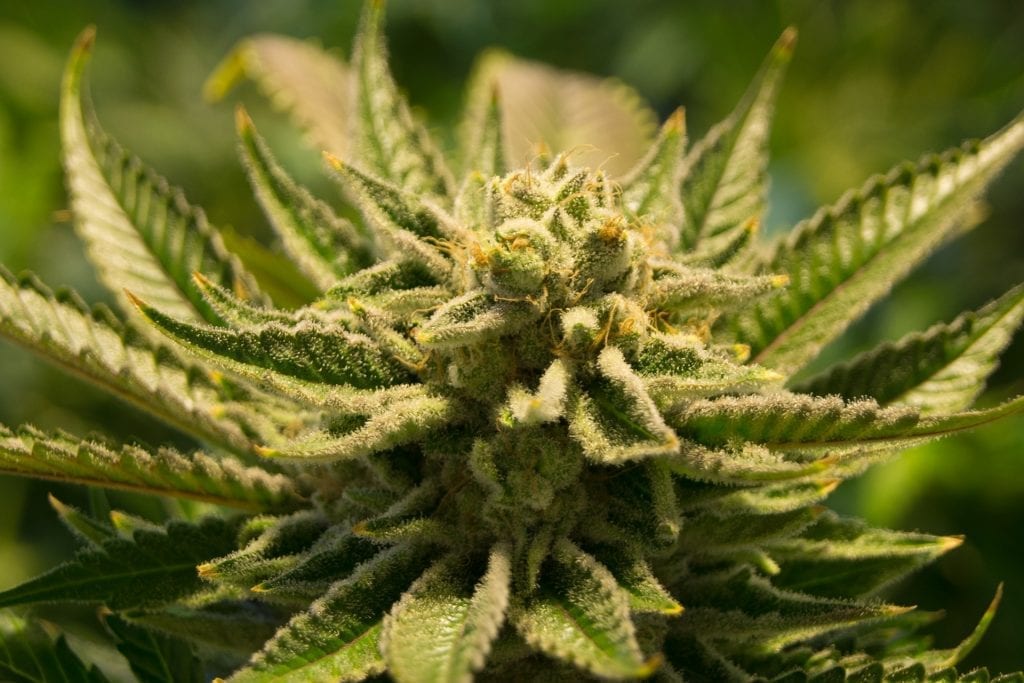
You can grow plants or crops from plant clones or root cuttings in your garden from your wide array of options. Hence, by taking aeroponic cuttings, you can fill your exterior with the exact copy of your most favorite crop.
What is Aeroponic Cloning?
The words “aeroponic cloning” can be a little dreadful, but don’t worry. We will break it down for you so it will be easy to understand.
Aeroponic cloning is derived from Greek words. The word “aer” means air, and “ponos” means labor. In the cultivation world, aeroponic cloning means the roots of your plants are in a soilless growing medium.
Thus, you have to suspend your plant roots in the air, and they get nourishment from nothing except nutrient-laden mist.
Furthermore, aeroponic cloning can be done by a cloning machine, or you can make a DIY aeroponic cloner to grow your plants quickly.
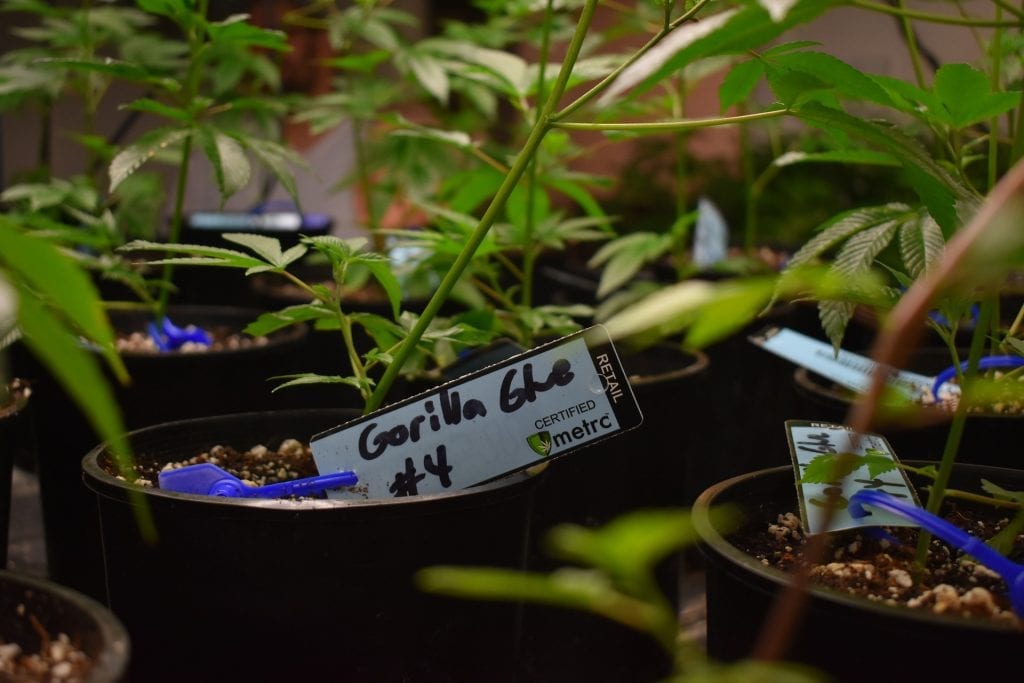
The designing of aeroponic systems allows the planting of seeds in foam pieces. The dangling roots have nutrient mist while the seeds are exposed to light. The foam holds the root mass and stems into place for the plant to grow efficiently.
Aeroponic Cloning Machines
An aeroponic cloner makes the process of plant cloning easy by replicating your favorite plants and crops. Also, it speeds up the growing process of a plant. By using a cloning machine, the success rate of cloning usually goes up to 100 percent.
Instead of embedding your plants in a rooting media, an aeroponic cloner allows your plants to thrive in air. Your cuttings root in an ultra-fine nutrient mist. Thus, it frees you from the expenses of purchasing media for your plants.
Moreover, an aeroponic cloning machine is a circular box or a plastic square that contains a nutrient mixture, a pump, and aeroponic spray heads.
At the top of an aeroponic cloner, there are several circular holes filled with hard or soft neoprene inserts. These neoprene inserts are cloning sites, and their amount varies in several cloning machines.
Do you know what makes aeroponic cloning machines amazing? An aeroponic cloner does not require a humidity dome to maintain humidity levels. The ultra-fine mist enables plant clones to uptake the moisture directly according to their needs.
Frequently checking the levels of moisture is something you have to do when planting clones, but with the help of a cloning machine, you do not have to stress yourself. An aeroponic cloner will automatically do it for you.
Instead of buying an aeroponic cloning machine, you can also build your DIY aeroponic cloner to root your cuttings in an old-fashion way.
Complete Guide in Aeroponic Cloning
Before moving towards the best aeroponic cloners, let’s quickly go through the aeroponic cloning tips. This guide will provide all the information on how you can take cuttings and clone them in these systems.
Okay, so let’s jump right in!
Prepare your Cuttings for Aeroponic Cloning
To cut the plant, make sure to use a sterile and sharp instrument such as a pruning shear or a scissor. Cut your plant clones at a 45-degree angle to obtain the cleanest cut.
Then, dip your cuttings in a rooting gel; this will promote quicker root growth. Always apply the rooting gel at the bottom of the cuttings.
Before planting your clones, ensure that your cloning system is free of bacteria, molds, other organic materials, and it is clean.
Fill up Your Aeroponic Cloner
Fill up your aeroponic cloning machine with water to an indicated level at a temperature of 18 to 20 degrees celsius. Make sure to use regular tap water. Avoid using reverse osmosis water and distilled water.
Then, attach the mister to the pump. You can keep water temperatures cool by switching the pump on and off after every half an hour. It shows better results according to several growers. Also, monitor the water temperature by using a tank thermometer.
At this stage, you can use a light nutrient mixture such as a rooting stimulator or silica products. These products protect from bacteria and help to build strong cell walls.
Moreover, many growers add mineral (hydroponic) nutrients. They tend to keep the reservoir clean.
Furthermore, several gardeners use a dilute version of bloom formulation due to the presence of mineral phosphorus as it promotes root development.
However, if you are taking cuttings from a healthier mother plant, then there is no need to add extra nutrients. There are no roots to feed at this point; hence it beats the purpose.
If you want to put additional nutrients, then keep a close eye on the pH levels during the first 24 to 48 hours. Make sure the PH levels are between 6.0 and 6.3.
Make sure to fill the machine with water at the highest level (it should be below the misters), the higher the quantity of water in res, the more stable the temperature and PH will be.
Check Your Plant Cloning Environment
Since aeroponic cloners do not need humidity domes, it does not mean that you do not have to give attention to your interior garden’s environment.
Even DIY aeroponic cloner success starts with maintaining appropriate temperature and cleanliness.
The plants will be happy if you keep them at a steady temperature of 21 degrees celsius. The humidity levels should be about 60 percent or higher.

Moreover, if you find that the level of humidity is lower, then consider misting the plant or use a propagation dome.
Another vital factor is to track the temperature of your nutrient solution via a nutrient thermometer. It should be about 20 degrees celsius.
If the temperature becomes warm, the oxygen will be unable to dissolve in your nutrients. Hence, pathogens will develop and will rot your stems and roots.
Double-check that the pump does not overheat the reservoir of your cloning machine. If it does, then relocate your aeroponic system to a stone floor or in a room that has an air conditioner.
Monitor the Level of Light
Cuttings do not demand much light. Ambient levels of light are adequate but try to avoid high levels of light, such as direct sunlight.
If you want to use a light, do not opt for big or bold lights. Preferably, use LED or HID lights. The best options for cuttings to root easily are LED grow lights.
Moreover, it is also essential to give them 16 or 18 hours of light per day. To obtain the best results, hang the lights five to eight inches away from the cuttings.
You can monitor light levels using PAR light meters.
Switch on Your Aeroponic Cloner and Insert Your Cuttings
Take your cuttings and insert them in the neoprene disc that is present in the foam’s center. These discs come with your aeroponic cloning machine.
Insert in such a way that the stem is dangling two-inches into the misting chamber. Make sure there is no foliage in the mister – only stems.
For DIY aeroponic cloner, you can use net pots to keep your cuttings. Make sure to use expandable clay pellets to keep cuttings in place. Also, you must stick out the ½-inch stem from the bottom.
Care for Your Plant Clones
You should not fret if your cuttings after you insert them in your machine wilts or become slightly droopy.
You split them up from the life-support system, so it is normal. They will perk up in an hour. If they still appear a little wilted, then lightly spray with either dilute foliar solution or with water.
Generally, after two weeks, you will observe root growth. When you notice root development, make sure they are bright white. It denotes that the roots are healthy. If you notice brown or grey roots, it signifies that the temperature of the nutrient solution is too high.
At this stage, you can add mineral nutrition, so your cuttings grow better. Some growers also consider changing the reservoir once the root develops.
After a week, the cuttings burst, and roots explode out. At this point, it’s quite tempting for many gardeners to think that the process of cloning is done here. It is better to be patient and wait for the secondary roots to emerge.
After ten days, secondary roots pop out. Now, it is time for your cuttings to leave the aeroponic cloner and start their journey as young plants.
Transplant Your Plant Clones
Usually, net pots are ideal. Also, you can implant your aeroponic cuttings into the ground. The length of the root should be six to eight inches.
Before transplanting, the longer root lengths of the cuttings have a higher survival rate. Ensure your selected media is moist, and it is at room temperature. Moreover, be kind to your plant clones by transplanting them in ambient lighting.
The Best Aeroponic Cloners | Reviews
Here are some of the best aeroponic cloners for you to go through. These reviews will help you make an informed buying decision to grow your aeroponic cuttings quickly.
[amazon table=”3349″] [amazon table=”3350″]Clone King Aeroponic Cloning Machine
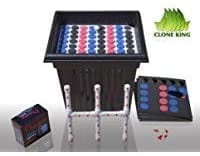
Clone King 64 has 64 sites for cloning plants. It is the larger version of 36-site Clone King. The primary features of this aeroponic cloner include a reservoir, a lid, 317 GPH submersible pump, neoprene inserts, and spray with many misters.
Moreover, it has a 25-sprinkler head that gives this system outstanding coverage. You can envelop and suspend your plant cuttings to root continuously in a nutrient-rich, especially oxygen-rich mister.
Furthermore, the setup is very straightforward. The machine comes with a manual that has detailed guidelines to grow your plant clones quickly. With this aeroponic cloner, you can assume to grow your plants in two weeks. Then, you can transplant them in a medium of your choice.
Pros
- Simple to use
- Straightforward setup
- Amazing results
- Affordable price
- 100% success rate
- An efficient system is free of hormones and harmful chemicals
Cons
- The sprayer nozzles might clog after a month
- The large-size cloning machine might be impractical for many home growers
Viagrow Aerponic Cloning Machine
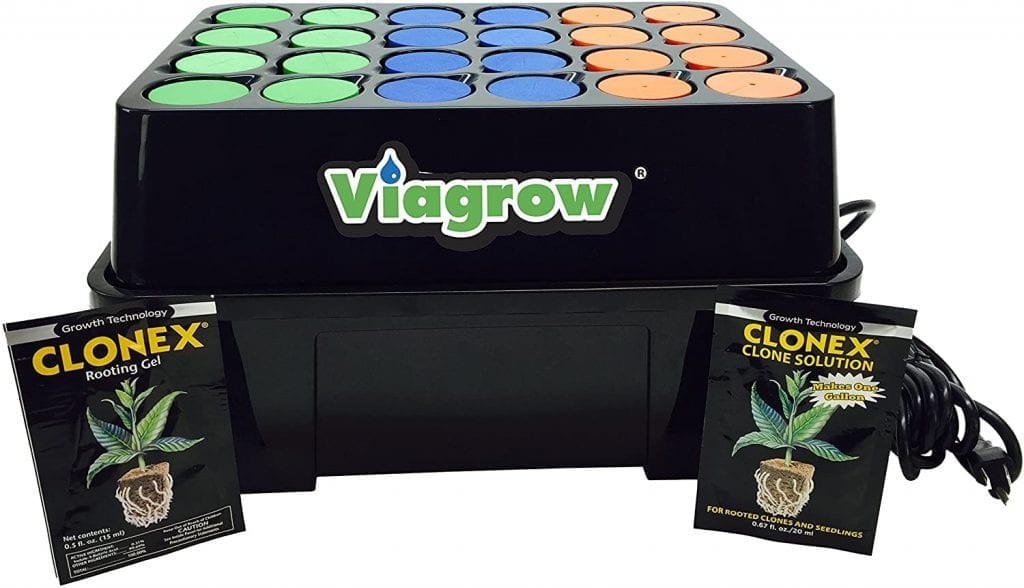
Viagrow Cloning Machine is built to grow clone plants easily and quickly in comparison to DIY aeroponic cloners. This aeroponic machine is a 24-site cloning system.
Moreover, the lid of the cloning machine consists of a leak-resistant port and air-hose port that enable you to ventilate the reservoir with the help of an air pump and an air stone. The UL clone pump contains an internal filter that prevents clogging.
Furthermore, the Viagrow machine comes with neoprene collars that are in multi colors. Thus, it helps you to keep tabs on a variety of plant species.
Sturdy materials are not used to build this aeroponic cloner; however, it never fails to produce outstanding results.
Pros
- Low cost
- Easy to use
- Does not clog
- Effective results
- Has a system that regulates temperature
- External aerating system
Cons
- Can be a bit noisy
- Not sturdy enough
- Do not include an air pump and air stone
- Does not include dome
Turboklone Cloning Machine
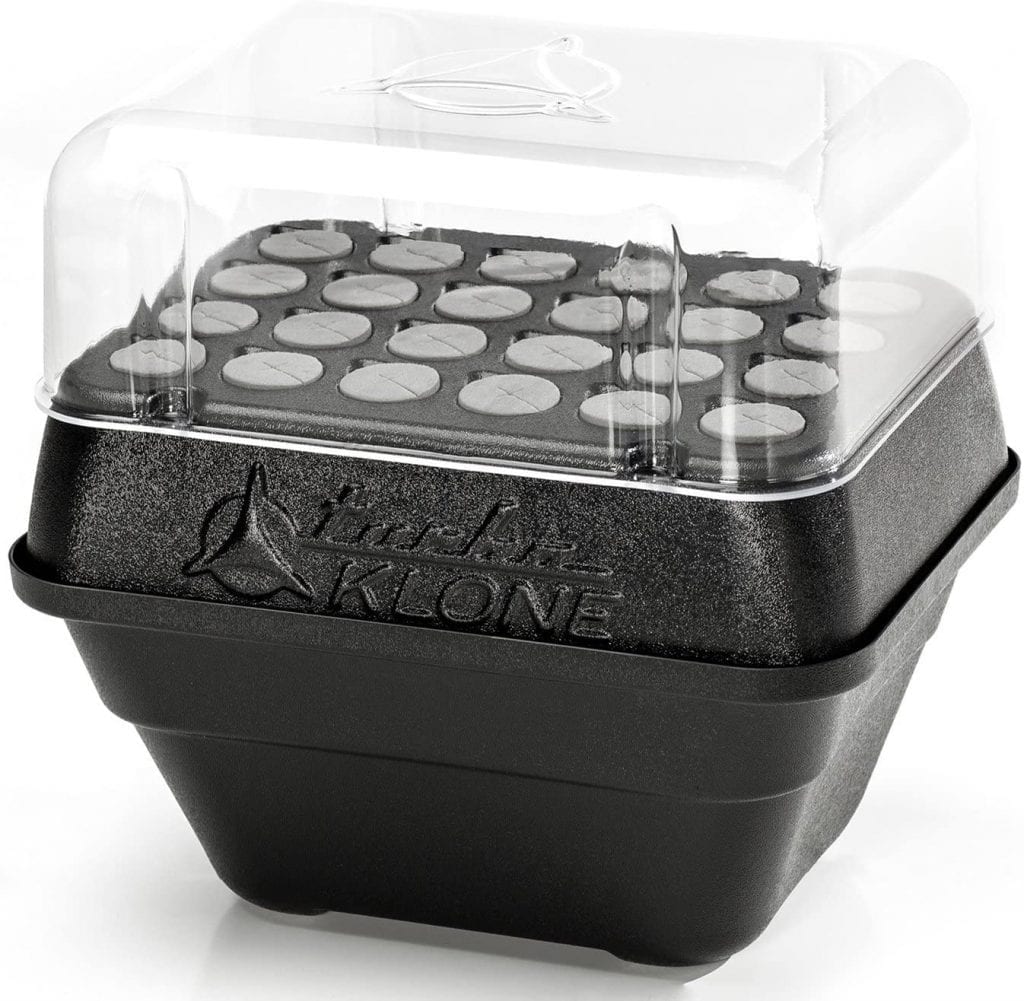
Turboklone T24D is a cloning system that has 24 sites and a humidity dome. It is a simple and a smaller version of T96, but its reliability and quality are similar. It is a wonderful choice for home growers who live in drier areas.
Moreover, the removable humidity dome in this cloning system helps to prevent initial transplant shock and leaf transpiration. Also, it consists of a submersible pump that continuously sprays oxygen and water to promote robust and quick root growth.
Also, this innovative design helps to grow your plants quickly and are generally healthier than by DIY aeroponic cloner. Thus, this cloning system minimizes root damage from diseases and pests.
Furthermore, the fans in this cloning machine keep the system cool. The outstanding features of Turboklone T24D include a large capacity to clone plants and easy to wash rounded edges.
Pros
- Large capacity
- Easy setup
- Outstanding results
- Takes up less space
- Sturdy and durable construction
Cons
- Drain port ring may leak
- The fan may create noise
- The dome may not maintain humidity
Hortipots Aeroponic Cloner
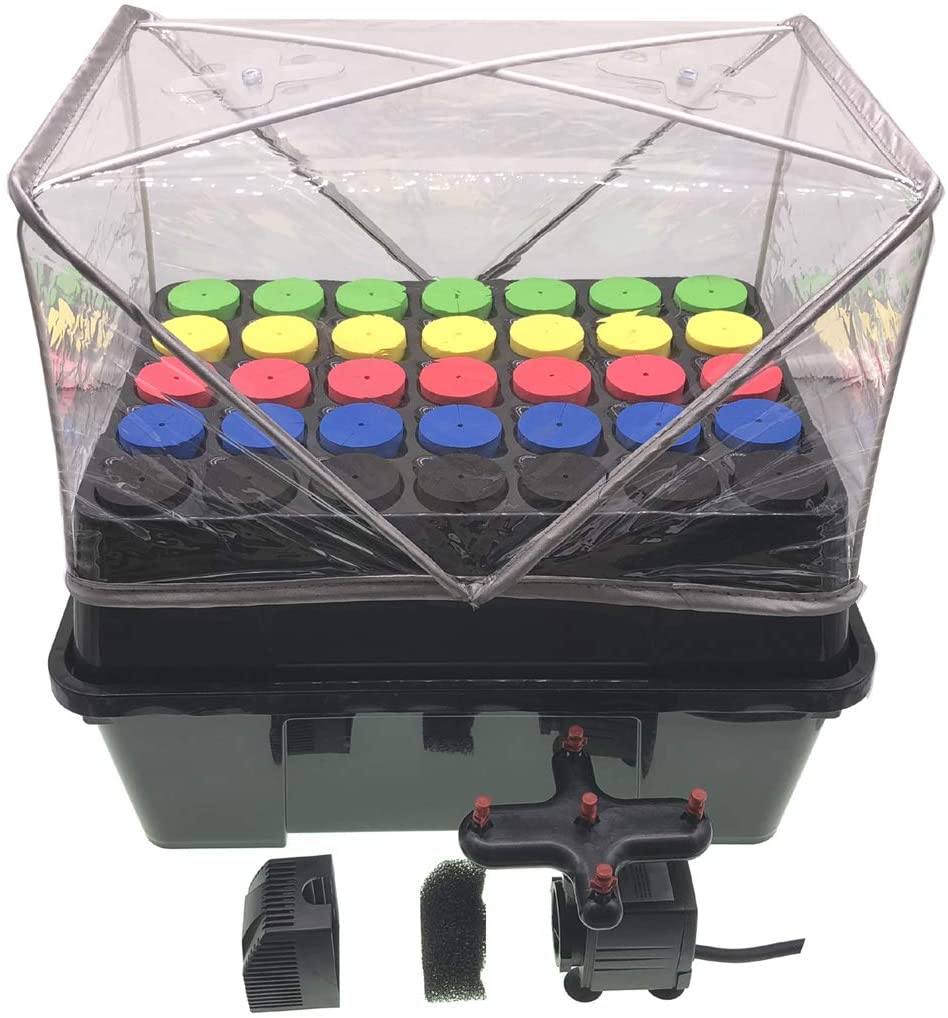
Hortipots aeroponic cloner is the best industrial cloning system in the market nowadays. It is not a DIY aeroponic cloner, and it is built with reliable parts.
The success rate of this cloning machine is excellent. Also, the setup is very easy.
Moreover, this cloning system comes with a propagation dome with all the other essentials. The humidity dome will stop surplus leaf transpiration and will prevent the plant from initial transplant shock. Also, the dome is foldable; you can attach or remove it at your convenience.
Furthermore, the Hortipots aeroponic cloner does not require air pumps because it has several outlets of extra air and moisture on its lid. Similarly, this cloning system ensures zero mess, which can occur due to drainage problems.
Pros
- Assembly is simple
- Well-engineered reliable parts
- Contains a system that regulates temperature
- UL-listed sprayers and pumps
- Refund policy is easy
- Parts are readily available
Cons
- Cloning collars require routine cleaning
- The sprays can be a little harsh
Hydrofarm OX20SYS
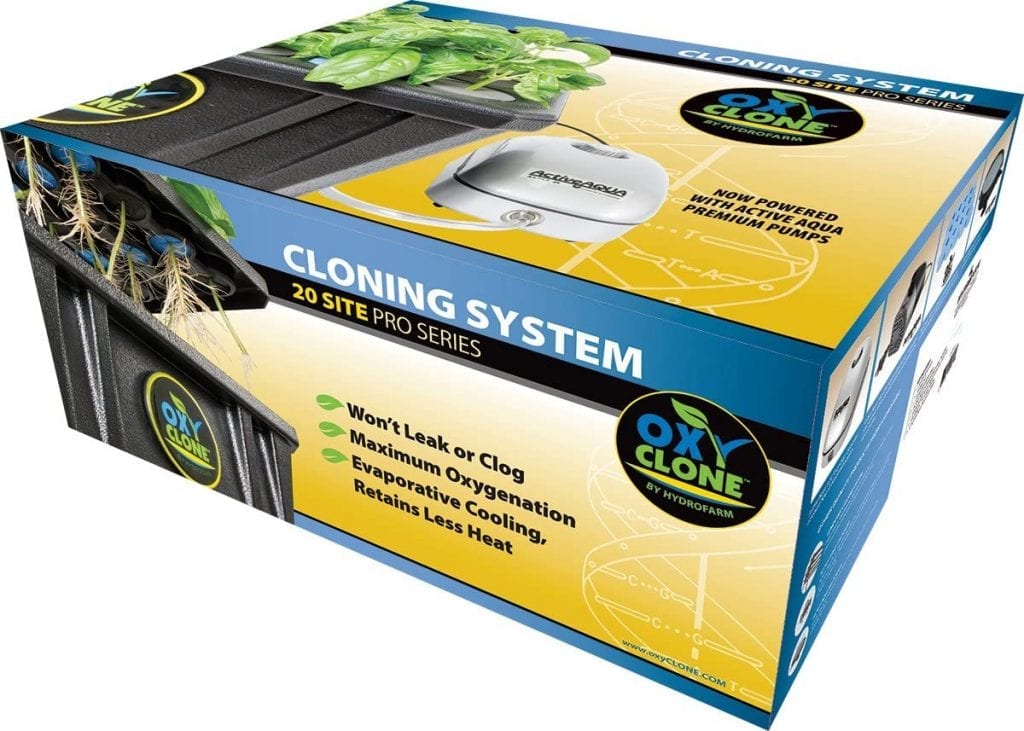
Hydrofarm OX20SYS cloning machine is a perfect choice for professional and beginner home growers alike.
There is plenty of space in this machine to grow twenty plants simultaneously. Also, the cloning system provides maximum oxygenation to each plant. Hence, plants receive optimum care.
Moreover, in this cloning machine, you can grow a wide array of plants. Also, it is up to you to replicate any favorable plant you want all around the year.
Besides that, the machine has a durable, functional, and compact design. Moreover, the submersible pumps are responsible for delivering turbulence, while the Venturi valve draws in air bubbles.
Simultaneously, an active aqua air pump provides a flow of dissolved oxygen for maximum aeration via 4-inch air diffuser. Hence, this cloning machine works as an ecosystem.
Furthermore, the machine does not require high maintenance. Also, it conserves less heat; therefore, the cuttings remain safe. In addition, the system does not clog or leak to disturb your replicating process.
Pros
- Simple setup
- High-quality construction
- Great regulation of temperature
- Easy to clean
- Spacious
- Compact in size
Cons
- Works best after transitioning the clone into the soil
- Air pump may create a problem
- Small air stone
Recommendations
Aeroponic cloning machines are versatile. They vary in capacity, size, features, and price. Evaluate each aeroponic cloner for yourself because it will minimize your workload and elevate your success rate.
It might be tempting for you to buy the cheapest aeroponic cloner to meet your gardening needs. However, if you are a beginner and searching for more affordable options, then it is better to invest in the Viagrow cloning machine.
Moreover, if you are looking for a bigger aeroponic cloner to clone large amounts of plants, then invest a little extra on Clone King aeroponic cloning machine.
However, do you want to save a bit on aeroponic cloning equipment and buy unbranded, wholesale products? We recommend that you check out this website. Dealzer offers great products at a fair price. They sell a lot of wholesale products that come directly from the manufacturer. We really like their products! Hopefully, you do as well.
Summary
Let’s do a quick recall!
An aeroponic cloner or a DIY aeroponic cloner will help you replicate your most desirable plants or crops quickly. Just like a relationship, do not overthink or become paranoid if things are not progressing rapidly.
These cuttings thrive in a soilless medium and require nutrient mist, appropriate ph levels, and ambient light to survive. Moreover, if you follow the aeroponic cloning tips, you will become a plant cloner guru in no time.
Table of contents



